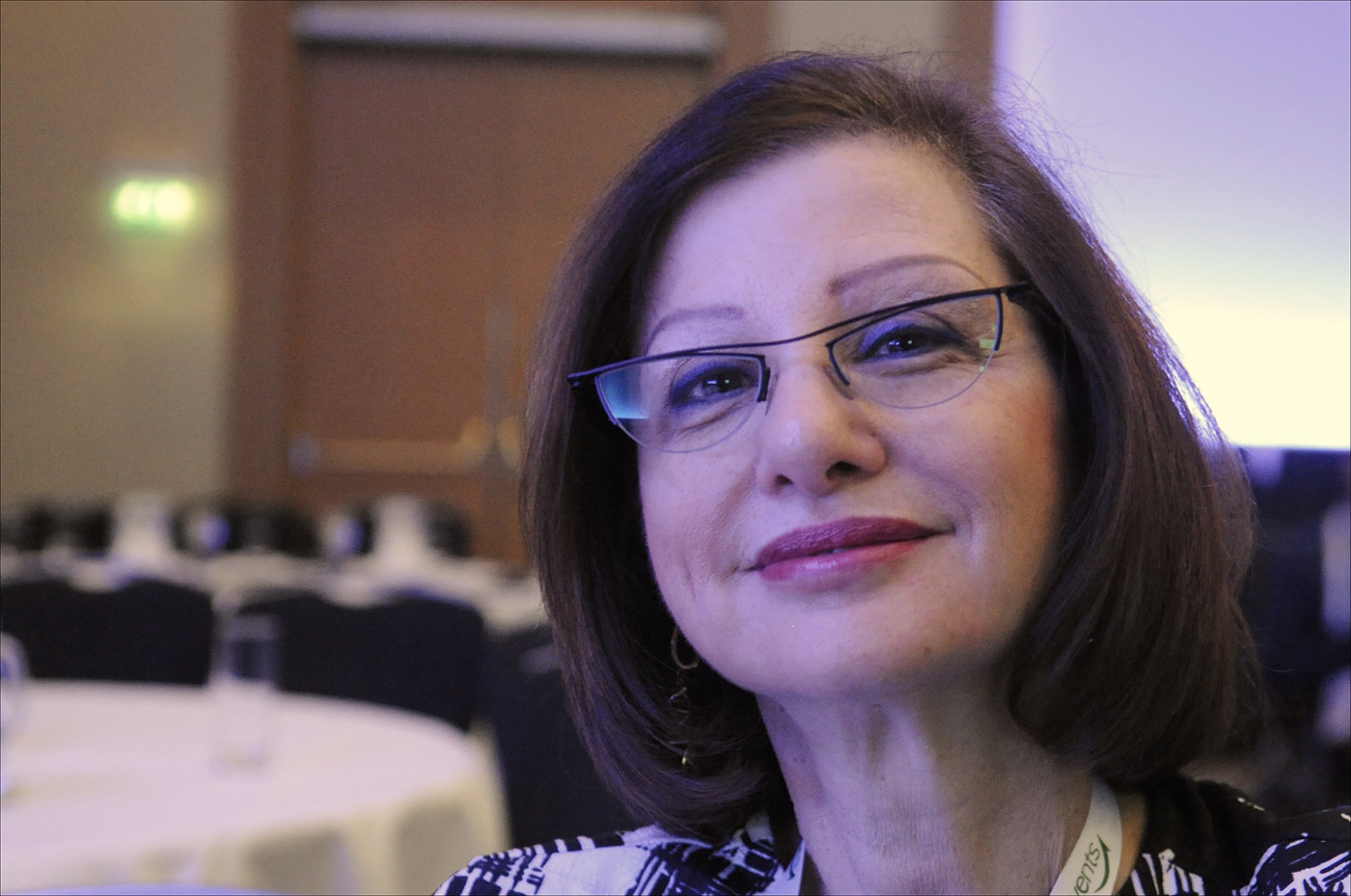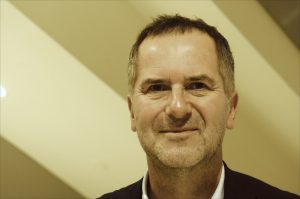Fabry Disease More Common Than Previously Thought, Experts Say
Written by |

Gheona Altarescu, MD, runs a large specialized Fabry disease clinic in Israel. (Photo by Larry Luxner)
Two of the world’s top experts in Fabry disease, geneticists Dominique Germain of France and Gheona Altarescu of Israel, say the number of people born with the disorder may be significantly more than once believed.
Both made presentations this month at the 2nd International Congress on Advanced Treatments in Rare Diseases in Vienna.
Germain, a professor of medical genetics at the University of Versailles in France, has been director of the university’s Referral Center for Fabry Disease since 2006. He said the incidence of Fabry disease is usually cited as 1 in 50,000, but several recent newborn screening studies in Italy and Taiwan suggest that Fabry is far more common — closer to 1 in 7,000.
“The disease is pan-ethnic; it’s been found all over the world,” he told Fabry Disease News on the sidelines of the March 4-5 conference. “As always, we have poor data for the African continent, but the interesting thing is a a high prevalence of one mutation, IVS4, in Asia. It’s extremely prevalent in Taiwan as well as mainland China, the Philippines, Vietnam and even Hong Kong.”
But sometimes it could take 10 or 20 years to properly diagnose a Fabry patient, because the symptoms — abdominal pain, nausea, diarrhea and fatigue — often resemble those of other rare diseases.
“It starts in childhood, with pain in the extremities,” he said. “Any pain in the fingers and toes should lead a doctor to consider Fabry. One doctor friend claimed she could diagnose Fabry in a 1-year-old baby, but diagnosis is more common at 4-5 years of age.”
Germain said that generally, male patients will progress to end-stage kidney disease, while female patients are usually symptomatic.
In fact, the disease is inherited in an X-linked dominant manner, which means that the gene involved is situated on the X chromosome. Because women have two X chromosomes, they usually have a milder form of the disease or, in rare cases, no symptoms at all. But a woman has a 50 percent risk of passing on a mutated gene to her children.
Women with Fabry live longer
Published data show that male Fabry patients live 58 years on average, while women with the disease have an average life expectancy of 75.
“You have three subsets of Fabry patients,” said Germain, who has been honored by the French National Academy of Medicine for his work. “With my research, we determined that about 12 percent of females with Fabry are completely asymptomatic, because by chance, they inactivated the wrong chromosome bearing the mutation. The vast majority, about 74 percent, are balanced, so they’re symptomatic but to a lesser degree. And the remaining 14 percent who inactivated the good chromosome behave exactly as their male counterpart, so they could have equally severe Fabry disease.”
In the past, Fabry patients generally died of end-stage renal disease. But, because of the availability of kidney dialysis machines and kidney transplants, he said, “today, the leading cause of death tends to be more cardiac or stroke-related.”
Germain, who met his first Fabry patients as a specialist in genetic diseases of the skin, has researched Fabry for more than 20 years and contributed to the clinical development program of Fabrazyme, an enzyme replacement therapy manufactured by Sanofi Genzyme.
He was also the lead investigator for Galafold (migalastat), developed by Amicus Therapeutics and approved first in Europe, then in 2018 by the U.S. Food and Drug Administration. Galafold is designed to restore alpha-Gal A activity in patients who have amenable mutations, a group thought to represent 35 to 50 percent of all Fabry patients.
PRX-102, an ERT similar to Fabrazyme, is being developed by an Israeli company, Protalix Biotherapeutics. It is currently in Phase 3 clinical trials.
Despite recent progress, Germain said, “patients with Fabry cannot participate in social activities because of fatigue. They also have difficulty sweating, so if they’re able to play soccer, for example, they’ll finish with a dry T-shirt. That results in difficulty to sun exposure.”
In addition, he said, “they have normal IQ, but of course, the disease may lead to depression and decreased quality of life.”
Israel now a center for Fabry research
Altarescu is director of the Medical Genetics Institute at Jerusalem’s Shaare Zedek Medical Center. She looks after all of Israel’s 40 known individuals with Fabry disease.
Unlike Gaucher disease — which affects Ashkenazi (European) Jews in disproportionately high numbers — there is no ethnic prevalence for Fabry, she said.
“Ashkenazi Jews, Sephardi Jews, Arabs, Christians — all can have it,” she said. “Throughout the world, the classic phenotype for Fabry occurs in about 1 in 50,000 births, but if you read the papers related to neonatal screening, you see the prevalence is more like 1 in 3,000 — showing that there are actually many late-onset patients who are very mild or asymptomatic.”
Altarescu, a native of Romania, specializes in lysosomal disorders. From 1997 to 2000, she trained in medical genetics at the National Institutes of Health (NIH) in Bethesda, Maryland, under the supervision of Roscoe Brady, MD. There, she treated more than 100 patients with various lysosomal storage diseases including Gaucher, Fabry, mucolipidosis type IV, Hunter disease and Hurler disease.
“When I came back to Israel, I began diagnosing and concentrating all the Fabry patients in a multidisciplinary clinic,” she said. “The other part of my work was to establish a pre-implantation genetic diagnosis lab at Shaare Zedek, meaning you test for any genetic disorders that are obtained by IVF.”
Altarescu said that thanks to neonatal screening, researchers have learned new things about Fabry.
“You can diagnose a patient genetically at birth, but there may be no symptoms until age 70, when many people are having strokes,” she said. “So I think the dogma for many rare genetic disorders should be changed now, based on newborn screening and trying to understand the natural history of these disorders.”
She added: “For recessive disorders, it’s unclear whether carriers are really completely healthy people as we thought. It’s revolutionary. We have to change everything we learned.”








